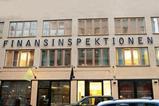The Swedish government has announced it is broadening the reform of the national pension buffer funds it launched in October to include consolidating AP1, AP3 and AP4 into two funds – in addition to its already-stated intention of merging AP6 and AP2.
This means the government is essentially carrying out the revamp of the buffer fund system proposed by the 2012 buffer funds inquiry led by pensions expert Mats Langensjö, which was subsequently abandoned due to resistance from some opposition parties and changed priorities. That proposal had been to reduce the five buffer funds to three.
The new review is a more limited exercise than the Langensjö probe, with leader Tord Gransbo appointed as a bokstavsutredare (“letter investigator”) simply to update the legal framework – implementing the changes rather than canvassing new ideas from diverse stakeholders.
Niklas Wykman, financial markets minister, said today: “The First, Third and Fourth AP funds, which manage part of the buffer capital belonging to the pension system, are relatively similar to each other.
“The investigator must look at the possibility of taking greater advantage of economies of scale, which could mean a significant increase for future pensioners,” he said.
Gransbo’s team was commissioned in October was to investigate and submit proposals for measures to modernise and streamline the combined management of the capital held by AP1-4 and AP6, and a key instruction was to “investigate how AP6 can be appropriately integrated into the buffer fund system, particularly the option of merging it with AP2”.
In today’s announcement the government said the investigator would now also review how the Stockholm-based buffer funds could increase the economies of scale.
“This involves, for example, examining the conditions for three similar funds to be consolidated into two,” the government said.
The Gransbo probe is taking place within the Ministry of Finance, and anchored in the Pension Group – a longstanding cross-party committee that has recently been expanded to include representatives from all parliamentary political parties.
The government said a buffer fund costed up to SEK400m (€35.7m) a year to operate, adding: “and even a small saving can free up funds for future pensioners, as they can instead earn interest as part of the fund’s capital”.
Read the digital edition of IPE’s latest magazine

























No comments yet